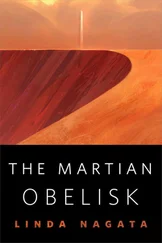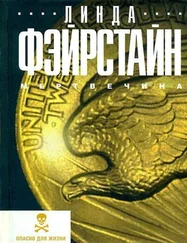She hoped for proof of life with a child’s eager hope, even as she reminded herself not to let hope influence her judgment. No matter what the refined image showed, she had to view it with an impartial mind. She had to see what was actually there and not just what she wished to see.
The existing image on the projection screen blurred—a dramatic touch, a clear demarcation—before snapping back into focus. Across the watching audience, a collective gasp. Pasha’s hand rose to cover her open mouth.
The best image from last year—the fully integrated image—had shown only glints and shadows that might have been nothing more than tiny flaws in the lenses or random errors in the integration algorithm. This year, with the data newly integrated from Khonsu , those glints were now, undeniably, objects.
In this iteration, the DI had used a screen to block out the direct light of the star, allowing a better look at the surrounding space.
Pasha could now clearly see the lit crescent of a planet or a planetoid, a moon, something… tiny in the overall span of the image but sharply defined and so tantalizingly bright blue in color it commanded the eye to gaze upon it. And paired with it, a smaller crescent, also blue, but not so sharply rendered.
Naresh again, coolly confident: “The larger crescent must be Tanjiri-2. It’s right where the planet should be, but—”
He broke off as another tag popped into existence on the image. Pasha leaned forward to read it. It confirmed Naresh’s evaluation, labeling the larger crescent as the known planet, Tanjiri-2.
“This is quite extraordinary,” Vytet said breathlessly.
“It’s impossible,” Naresh said, anger edging his voice.
This time, Pasha could not resist rising to her feet. She spoke out, defiant, incredulous. “Tanjiri-2 has no moon!”
It never used to have a moon. She’d read the reports. She was certain of this. There was no moon, not even a small rocky body, but in this image the planet appeared to have gained a partner, a smaller world to be sure, but a living world.
“I think we’re looking past the biggest miracle,” Shoran said, projecting her powerful voice over the ongoing murmur of argument. “The living world, the originally inhabited world, still exists! It wasn’t destroyed to create the cordon. It still has atmosphere, an ocean. We might be able to walk there someday, stand on an alien shore.”
Pasha’s heart raced. Shoran was right. There might still be people living on that world and there would surely be life of some kind. And life was precious. Living worlds so very rare.
She flinched at a touch against her hand. Shoran, with a meaningful look toward her empty seat. Sheepishly, Pasha sat down again.
On the dais, Vytet was as awed as anyone. He drew a deep breath, shook his head in wonderment. “All right,” he murmured. A second breath to steady his voice, get his shock under control. “First pass analysis. Both worlds—the old and the new—have atmospheres and—we’ll need to check the spectra of course but I think Shoran is correct—both have oceans. Even that moon, that new, inexplicable moon. Tanjiri-2b, let’s call it! Are they living oceans? We can’t know yet but I want to think so. By the Waking Light! I never imagined we’d find such a thing. A newly created world. A living world.”
“Let’s take a step back,” Naresh said. “No other planetary bodies have been tagged in this image. But historical records assure us there were once additional worlds.”
Vytet cocked his head in an attitude of listening, and then looked out at Naresh. “The DI processing these images has not been able to resolve any other planetary bodies.”
Pasha drew a deep breath. The absence of other planets was eerie but not unexpected. She asked, “If Tanjiri-1 still exists, would it be visible from this angle of view? Or is it possible that it’s passed behind the star? Or behind… one of those other objects?”
Those other objects …
So far, no one had called them out directly. It was as if they were all in tacit agreement to discuss the most familiar objects first.
“Let’s get a projected position for the inner planet,” Vytet said.
A broad, bright crescent appeared, much larger and closer to the star than Tanjiri-2. The inner planet had been a gas giant in close orbit. If it still existed, it would have been clearly visible at the time the image was recorded.
“So it’s not there,” Pasha concluded.
Kona spoke up for the first time. Pasha had not noticed him before, standing in the shadows at the far end of the first row. “How the hell do you take apart a planet?”
Riffan answered from the back of the room. “Honestly, I hope we never figure that part out.”
This earned a low general chuckle.
“Still, it’s a question we have to ask,” Naresh said. “It’s gravity that holds a world together. Even if you could shatter a planet, gravity will pull most of the matter back—”
“But surely they manipulated gravity,” Shoran interrupted.
“Yes,” Vytet said. “There is no other explanation for it. They developed something as unexpected as the reef, only on a massive scale.”
A giddy laugh from Riffan. “Ah, but if we are going to entertain impossibilities then there are other explanations. Perhaps they’ve manipulated time, or opened seams between parallel universes, allowing disruptive forces to bleed through, or maybe they’ve folded the fabric of space to create brief tidal forces strong enough to tear worlds apart.”
Several seconds of silence followed this outburst. “Uh,” Riffan said, sounding deeply embarrassed. “I’m joking, of course.”
A scattering of laughter, but not from Pasha. She clenched an armrest, pondering the terrible possibility that some aspect of Riffan’s joking explanation was true. What had been done in Tanjiri System was so far beyond their own science it might as well be magic.
“We are resolved to trespass among the ruins of gods,” she said, not caring if anyone heard. Then she lifted her chin and spoke again, this time at good volume, determined to push the conversation forward. “Can we discuss the other objects?”
This request silenced the gathering for two full seconds. Then everyone started talking at once.
<><><>
Aside from the occulted star and the now-double planet, the image showed a generous sprinkling of faint, widely scattered points of light that together defined a flattened ring like a halo encircling the star. Nearly all the points were outside the orbit of Tanjiri-2.
A few structures, shadowy but limned in light, could be seen among the points.
The structures were large. Immensely large. So large, they made Tanjiri-2 look small.
Pasha counted thirteen megastructures visible in the image, each with a unique shape and none with a neat design. They looked like wreckage, ruined fragments fused together in the kinetic chaos that had followed calamity. Some lay horizontal to the plane of the ecliptic, others towered above it, their silhouettes suggesting long, drawn-out conglomerations of curved panels, partial spheres, rods, stair-step beams, and broken discs. The glittering points of the halo sparkled around them.
One megastructure appeared to be crowned in a wisp of white mist. Pasha imagined atmosphere still bleeding out of a broken habitat… but centuries had passed since cataclysm. More likely, the gravity of the megastructure allowed it to hold on to a fog of fine dust or frozen molecules of air.
“Aren’t we still missing matter?” someone asked.
Another: “My thought too. Surely there is not sufficient matter in that halo to account for all the matter that must have been used in the cordon at its peak.”
Читать дальше












